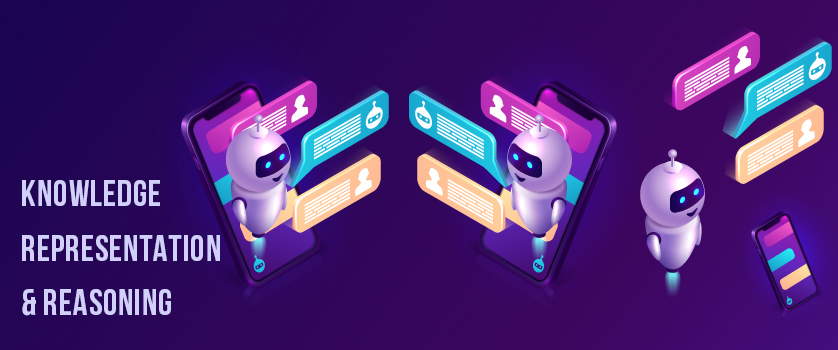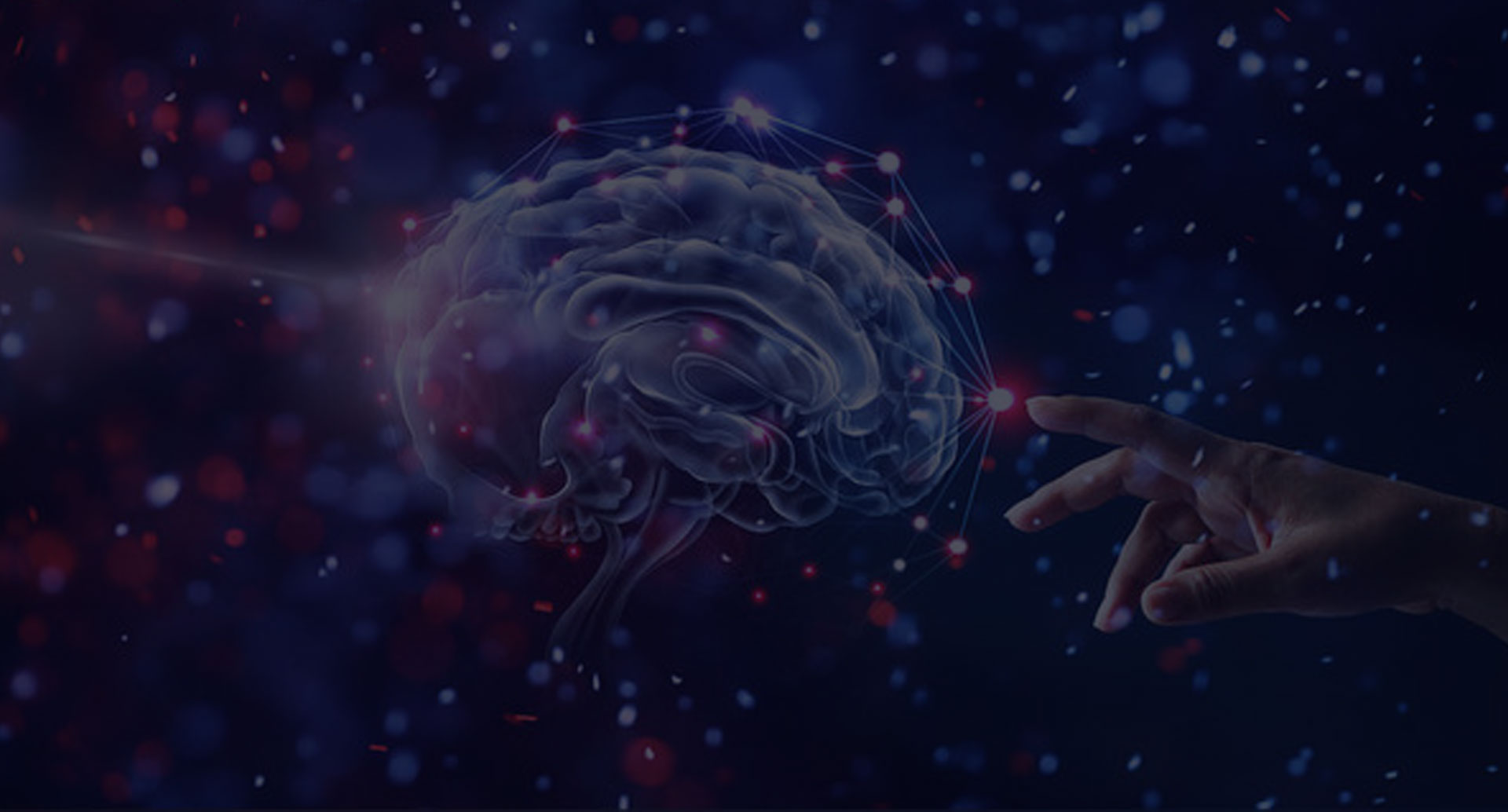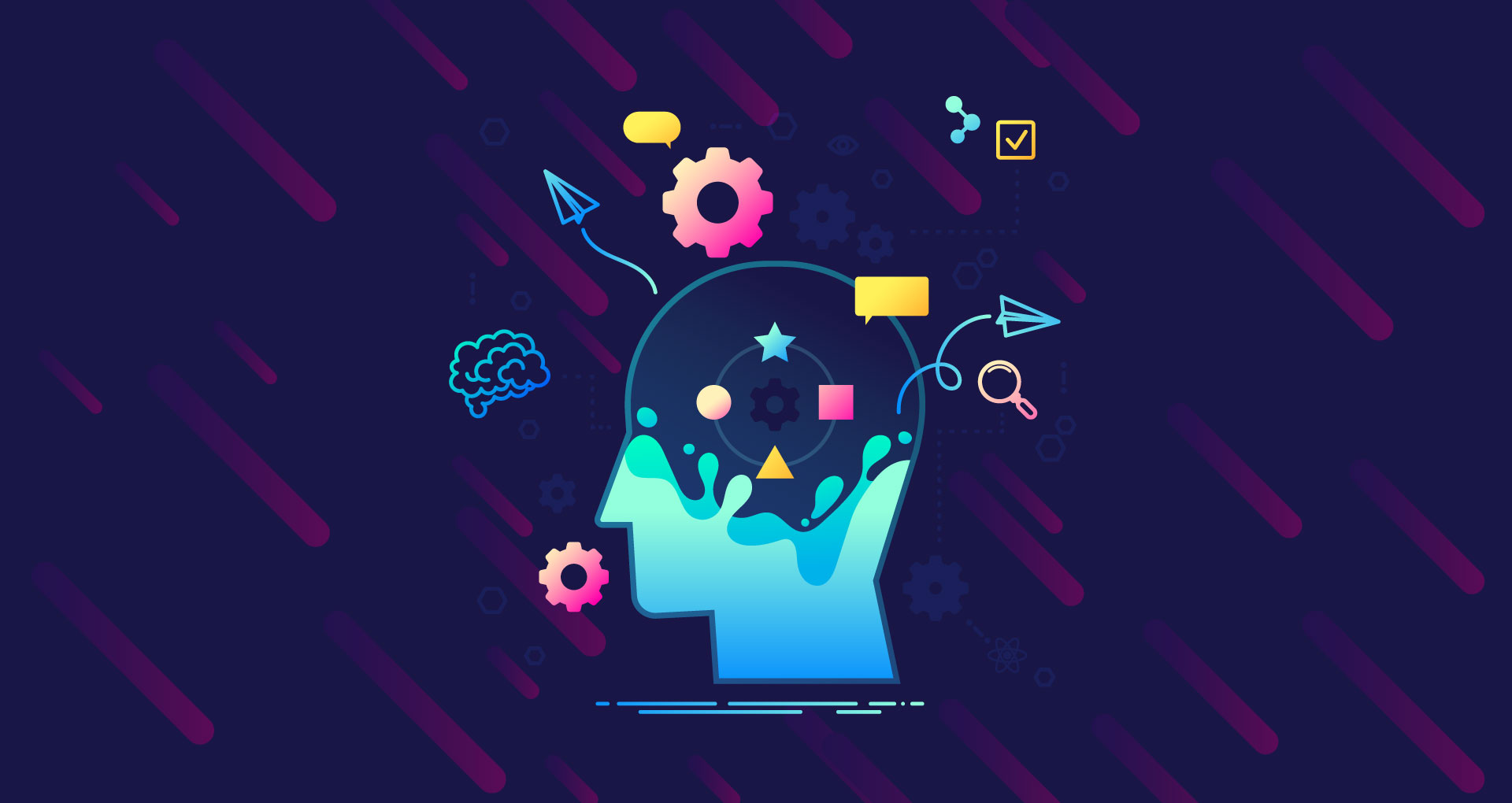
Anshul Jain
23 Apr 2020
Leveraging the capabilities of Artificial Intelligence AI, machines are now being designed to be smart and capable of performing tasks similar to humans, and every new invention is helping extend the frontier of Artificial Intelligence in software, machines, technology, as well as knowledge. Even the applications that are currently in vogue have the earliest trace of AI. They too are collaborating with humans to help them accomplish various tasks that were earlier unimaginable or limited to fiction. One key player in this entire process is Knowledge Representation and Reasoning.
But, wait!
What is Knowledge Representation in artificial intelligence? Why is it crucial for the proper functioning of AI machines and systems? It is to answer these questions we are here with a detailed discussion on Knowledge Representation and Reasoning.
Before we move on to describing Knowledge Representation and reasoning, let’s have a peek at the role it plays in Artificial Intelligence.
Artificial Intelligence Cycle:
KRR, as stated earlier, is needed to create an intelligent machine, which makes it a crucial part of artificial intelligence. However, it is not the only component that is responsible for making a machine intelligent. Almost all AI systems consist of the following components which are used to create an intelligent machine:.
1. Perception:
The first component of the cycle, perception allows the system to get information from its environment, which can either be in the form of visual, audio or other forms of sensory information.
2. Learning:
The learning component is adaptive and helps draw trends from the perceived data.
3. Knowledge Representation & Reasoning:
After collecting information, the system forms a meaningful representation, which can either be static or coupled with the learning component. Additionally, knowledge representation and reasoning coupled together and intrinsically tied to each other.
The other two phases of the cycle (Planning & Execution) are dependent on the analysis of the knowledge representation and reasoning.
4. Planning:
Once a useful representation is made, the information is used to plan a course of action.
5. Execution:
Finally, the planned action is executed, which enables the machine to perform the intended tasks.
Knowledge Representation and Reasoning in Artificial Intelligence:
Humans are well adept with the ability to perform assessments and use reasoning to make a decision suitable for a situation. However, machines and computer systems are dependent on a variety of technologies to fulfill these tasks, like natural language processing, machine learning, deep learning, speech recognition, virtual agents, and more. Among these, Knowledge Representation and Reasoning are central to the field of AI, as they consist of the things that make machines capable of performing tasks like humans.
In the field of Artificial Intelligence, Knowledge Representation and Reasoning, KR2 or KRR, represent the information about the world in a form that can be utilized by a system to solve complex tasks, such as diagnosing medical conditions, problem solving, knowledge reasoning, and more. Moreover, knowledge representation and reasoning work hand in hand with automated reasoning, to assert new information and knowledge, make inferences, etc. which is a part of all Knowledge Representation languages.
To further understand the concepts of these two important elements of AI, let us examine them separately.
A) Knowledge Representation:
Fundamentally considered to be a surrogate, a substitute for the thing itself, Knowledge Representation is a sub-area of Artificial Intelligence, concerned with understanding, designing and implementing ways to representing information in computers so that it can be utilized by agents to perform a variety of tasks like:
- Converse with people in natural languages.
- Determine the course of action.
- Plan future activities.
- Perform human-like problem-solving.
B) Knowledge Reasoning:
Another crucial component of Artificial Intelligence, knowledge reasoning AI is used to infer facts from existing data. It is the responsibility of the reasoning to derive information from the already implied information, which is present in the form of reasoning. Without this interpretation of the data, Knowledge Representation schemas won’t be able to perform their designated tasks.
Examples of Knowledge Representation:
Knowledge Representation can be further explained with the help of an example: Let’s imagine a boy is playing the game of chess against a computer.
Here the boy will use his knowledge of the game as well as reasoning to beat the opponent, whereas, the computer will be dependent on the data or information provided to it, to outnumber the winning moves of the boy. It is here that Knowledge Representation and Reasoning will come into play. It is the responsibility of KRR to express knowledge in a computer or machine, in a way that it allows the machine to perform the required tasks.
In short, KRR replicates human’s intelligent behavior and makes the machines capable of outperforming the former. Other examples of knowledge representation and automated reasoning are:
- Semantic Nets.
- Systems Architecture.
- Ontologies.
- Rules.
- Frames.
- Inference Engines.
- Automated Theorem Provers.
- Classifiers.
Types of Knowledge Representation:
Before we go any further let us understand the various levels of knowledge representation and the impact they have on AI. Based on the type of functionality knowledge representation is categorized into five (5) kinds of knowledge:
1. Declarative Knowledge:
Also known as descriptive knowledge, declarative knowledge is about statements that describe a particular object and its attributes, as well as some behavior in relation to it. This type of knowledge representation is expressed in declarative sentences, which include concepts, facts, and objects.
2. Procedural Knowledge:
The second type of knowledge representation, procedural knowledge provides details or knowledge about how to achieve something. Also termed as imperative knowledge , this knowledge is based on the task on which it can be applied. It is used to describe how a problem can be solved as well as to direct the steps to perform a task. Procedural knowledge derives information or knowledge based on rules, agendas, strategies, or procedures.
3. Meta-Knowledge:
Meta-knowledge is another important knowledge type, as it provides knowledge about other types of knowledge that are suitable for problem-solving. Moreover, it helps enhance the efficiency of solving a problem through the proper reasoning process.
The other two phases of the cycle (Planning & Execution) are dependent on the analysis of the knowledge representation and reasoning.
4. Heuristic Knowledge:
Based on thumb rule, Heuristic Knowledge or Shallow Knowledge provides information based on the strategies, compiled by experts, to solve the problems through the experience of past problems. Moreover, it is useful in guiding the reasoning process.
5. Structural Knowledge:
Structural Knowledge is the basic knowledge base used for problem-solving, as it describes the existing relationship between concepts or objects. It is associated with information based on expert system, concepts, and relationships.
How Categories are Useful in Knowledge Representation?
Classification schemes and categorization is an integral part of representing knowledge, as it enables knowledge based systems to perform tasks and solve problems using accurate details and information. These schemes have properties that enable the representation of entities and relationships in data structures that reflect the knowledge of the categorized domain.
Moreover, this categorization is in terms of the ability of the structure to reflect, discover, as well as create new knowledge, which further increases its value in knowledge representation.
Knowledge Representation Techniques:
There are four techniques used for knowledge representation, which are:
1. Logical Representation:
Logical Representation is the first knowledge representation technique, which is a language with set rules that are used to deal with propositions. There is no ambiguity in representation in logical representation, as it drives conclusions on the basis of various conditions.
2. Semantic Networks:
Simple and easy to understand, semantic networks are a natural representation of knowledge. It is the networks of labeled nodes and links, which are used to represent information in the form of graphical networks as well as to convey meaning in a transparent manner. From categorizing objects into different forms to linking objects, Semantic Networks Representation is crucial to knowledge representation. Moreover, it consists of two types of relations:
- Inheritance (IS-A relation)
- Queries (Kind-of-relation)
3. Production Rules:
Expressed in natural language, production rules consist of a pair of Condition and Action, wherein the action is always after condition. This knowledge representation technique is highly modular and can easily be removed, added or modified. Production Rules consist of three parts:
- Set of production rules
- Working Memory
- Recognize-act-cycle
4. Frames Representation:
Proposed by Marvin Minsky in 1974 in his article “A Framework for Reasoning”, frames are AI data structures that divide knowledge into substructure by representing stereotypes situations. Derived from Semantic Networks these consist of Slots, of various types and size, and slot values that are known as Facets. It is used widely in various knowledge based systems and applications, as it makes programming easier by grouping the related data.
Requirements of Knowledge Representation Systems:
For the Knowledge Representation system to work properly, it is important that they consist of the following attributes:
1. Expressiveness:
The knowledge-based language should be expressive enough for knowledge engineering to work effectively.
2. Representational Accuracy:
It must be capable of representing all of the required knowledge.
3. Inferential Adequacy:
Knowledge-based systems must be able to manipulate the representational structure to produce new knowledge corresponding to the existing structures.
4. Inferential Efficiency:
Should direct the inferential mechanism into the most productive directions by sorting appropriate guides.
5. Acquisitional Efficiency:
Must have the ability to acquire new knowledge using automatic methods.
6. Semantic Clarity:
It should have clear and well-defined semantics.
7. Meta Reasoning:
The system should be capable of introspecting on its own knowledge.
Conclusion:
From integrated systems developed in 1983, the Knowledge Engineering Environment (KEE) to the latest applications and software, each and every intelligent machine is integrated with Knowledge Representation and Reasoning, like First Order Logic, the ultimate knowledge representation formalism, among others, as it enables them to perform tasks with the same level of accuracy as humans. In short, there is no doubt that the importance of Knowledge Representation and Reasoning is exceptionally high in Artificial Intelligence.




